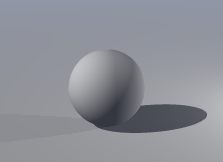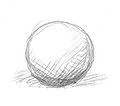Shading
Shading, in visual art, is the method of adding three-dimensionality and depth to a drawing or other image by darkening shaded areas, i.e. areas that appear darker because they receive no or less light from the light source(s) (see also lighting).
Shading is used in both black-and-white, greyscale, monochrome, and fully colored works. It is possible to add shading first and color later, but also to add color first and shading later. In drawing, shading is often created through hatching techniques.
If a model or photographic reference is used, shading mainly requires good observation skills. When drawing or painting from one's imagination, shading requires both a good understanding of the three-dimensional form of the figure and objects, as well as knowledge about the direction of light and the rules of light and shadow. Shading is also an important element in rendered art, but there, it is created with the help of the rendering software, and the artist's job is mainly to position the objects, determine their surface properties and to position and configure the light sources.
The opposite (and often, complement) is highlighting, where highlights are added.
See also
Chat rooms • What links here • Copyright info • Contact information • Category:Root


